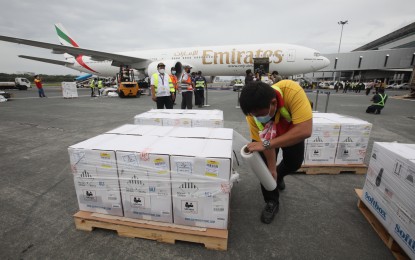
File photo
MANILA – The chair of the House Ways and Means Committee on Thursday said the country’s 5-percent gross domestic product (GDP) growth target for this year is still attainable amid more coronavirus disease 2019 (Covid-19) vaccine deliveries, particularly in lagging regions.
Albay Rep. Joey Salceda, who also co-chairs the House’s economic stimulus and recovery cluster, said vaccine equity is necessary to fix interregional supply issues in lagging regions like the Bangsamoro Autonomous Region in Muslim Mindanao and Bicol.
“The challenge really is two-pronged. One is demand, and the other is inflation. Both can be solved by vaccinations in areas where supply and demand bottlenecks exist, like Bicol. The differences in Covid-19 situation among regions is what’s causing transport bottlenecks. So, you make the situation similar through vaccine equity,” Salceda said.
He said problems would still exist no matter how high the vaccination rate is in Metro Manila if the provinces are still “not out of the woods with Covid-19”.
“We are at a bit of a cliff here when it comes to inflation. You stimulate demand in NCR (National Capital Region) without fixing the interregional supply issues through vaccine equity, and you will see high inflation, especially in transport and food. So, while you might see high nominal growth, your real growth is in trouble. You have to do both demand stimulus and vaccine equity,” he added.
Salceda suggested to the country’s economic managers to keep the policy rates pro-growth, increase food supply, and food mobility to efficiently allocate and vaccinate in the regions, which are “aching for” new arrivals.
“Manila is on the road to being okay. The regions are still not. We can’t do this without aggressive catchup efforts on the part of the national government, especially on vaccine arrivals,” he said.
Asked about his inflation projections for 2022, Salceda said it is still possible to stay at 4 percent or below, depending on whether the country experiences a super typhoon in October and November, and whether fuel costs in the world market continue to increase. (PNA)
